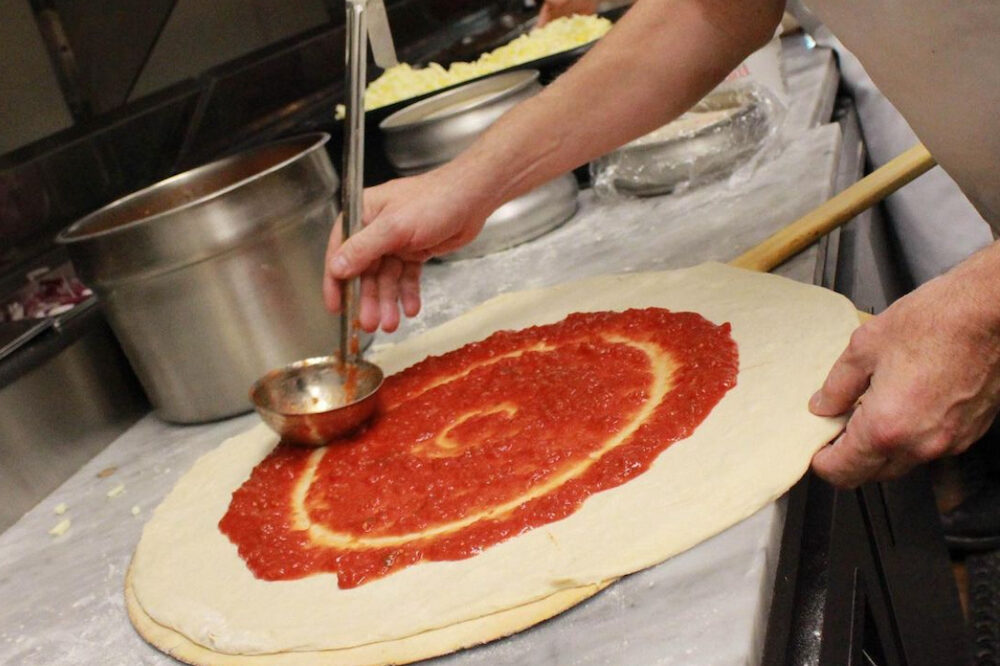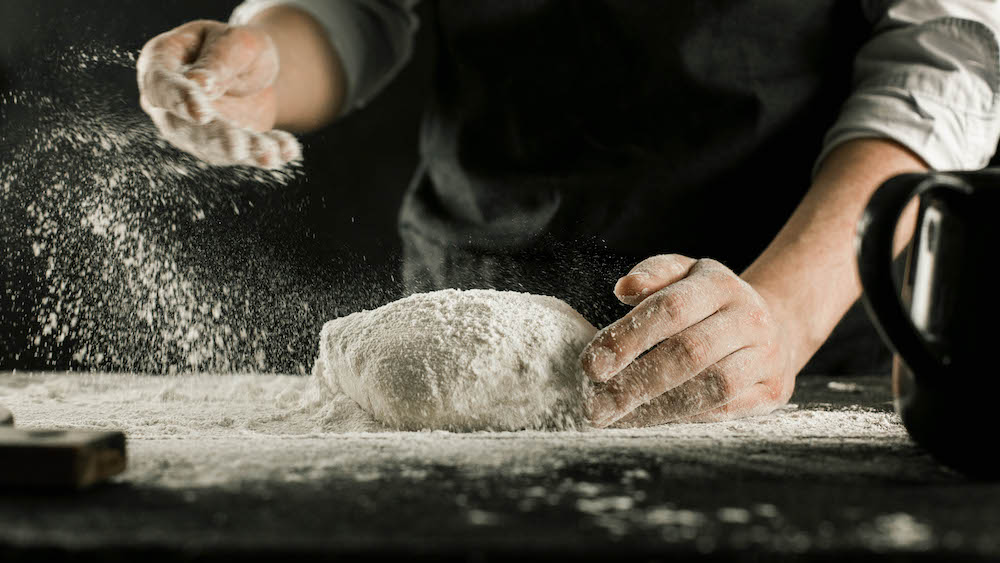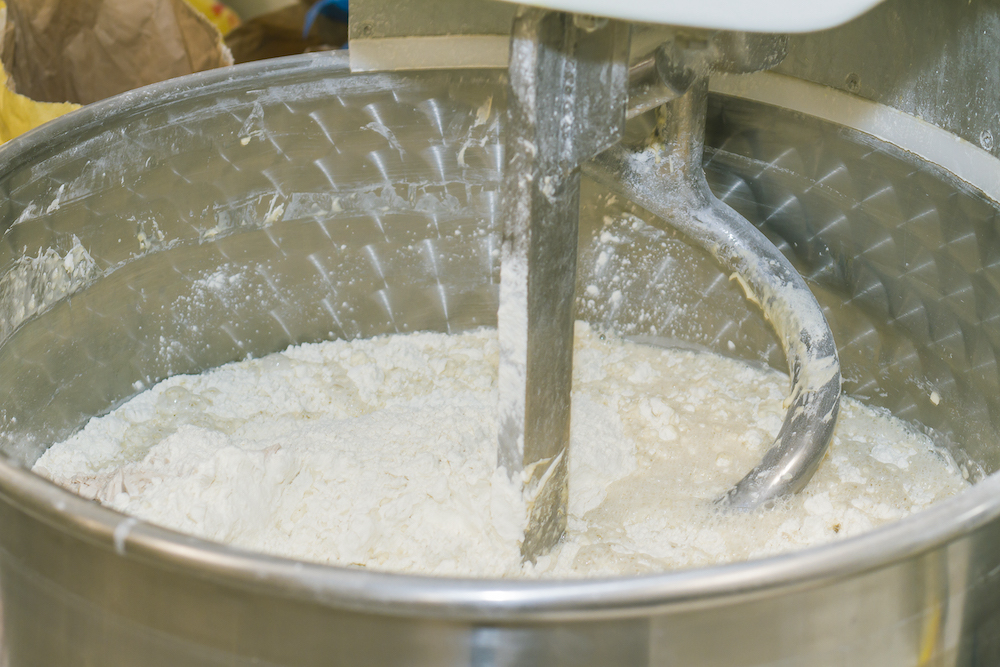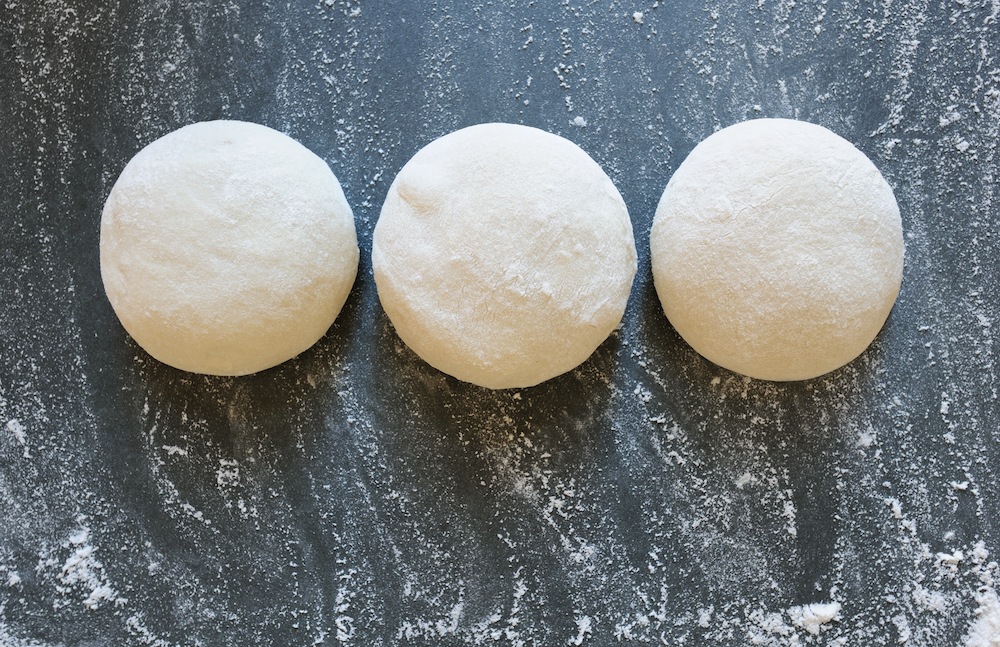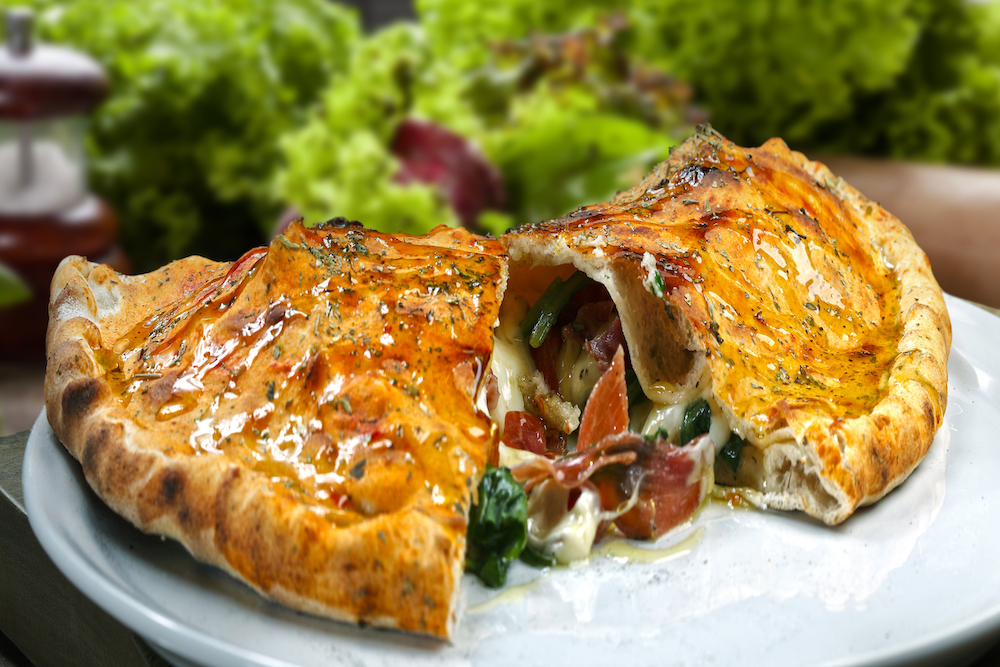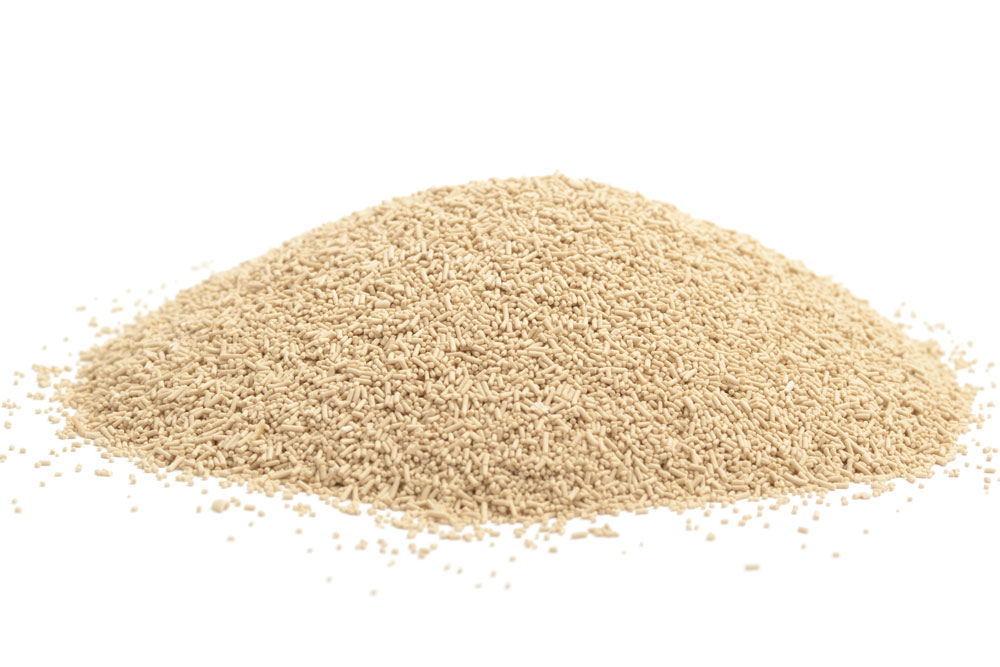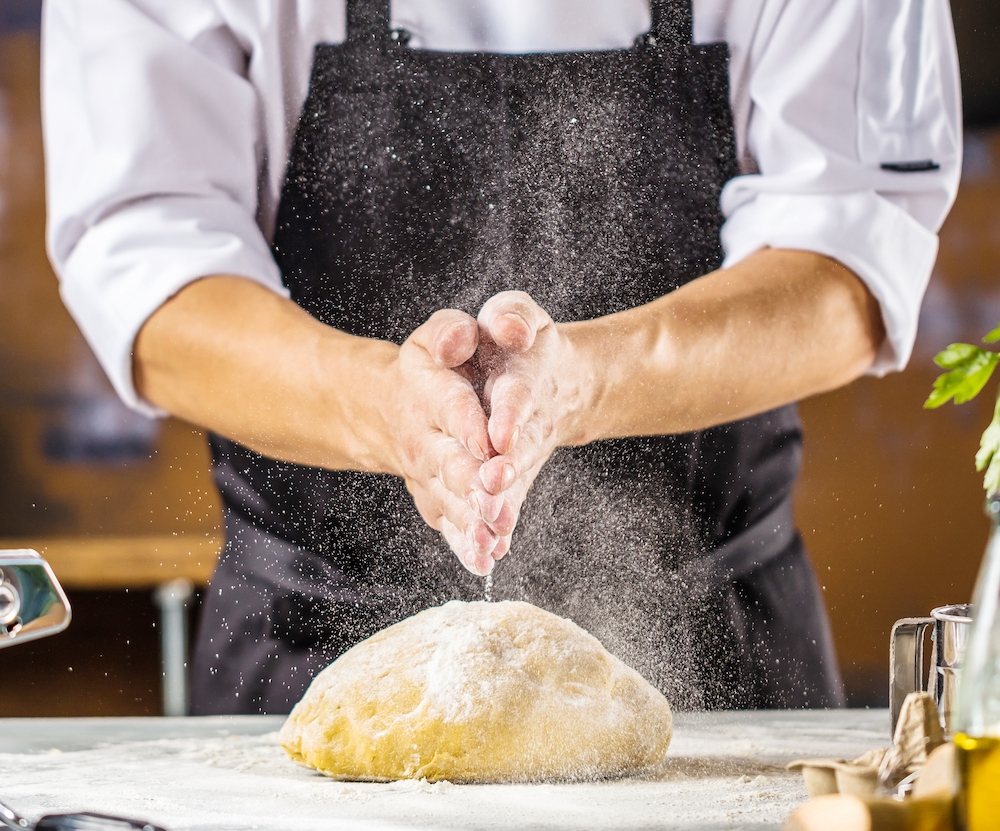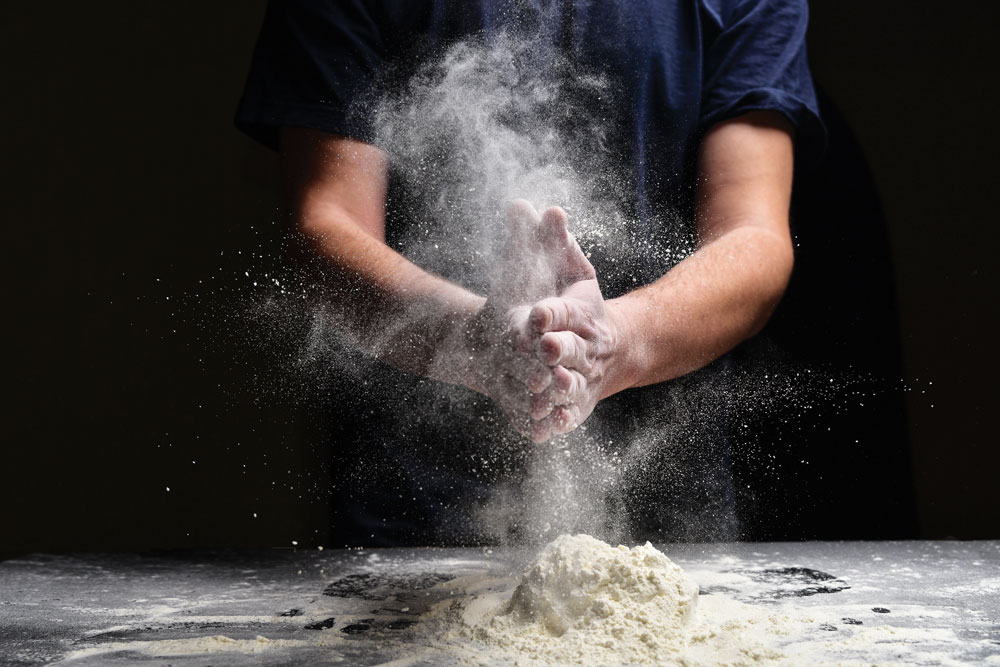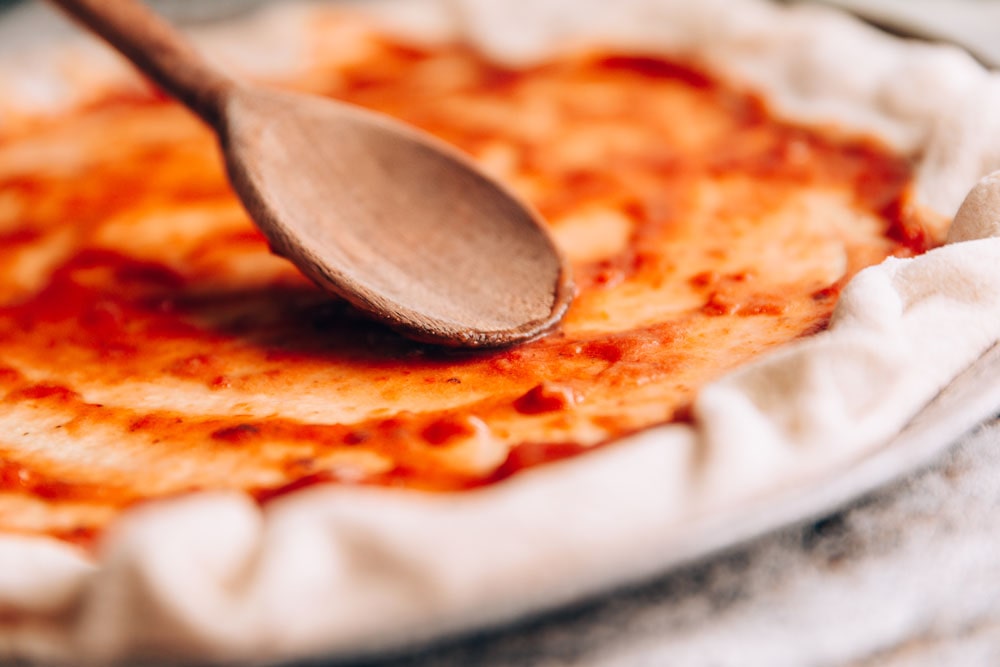Question:
I’ve heard and read where you have made a reference to a special coated leavening material for use in making take and bake pizza dough. What is it, and how is it different from regular baking powder?
Answer:
In all of my ramblings over take-and-bake pizza dough, you will notice my reference to chemical leavening materials, namely sodium aluminum phosphate (SALP) or glucano-delta lactone (GDL) and soda (baking soda). The SALP and GDL are acidulents which, when combined with soda, form carbon dioxide, the leavening gas that is responsible for the dough rising in the oven to create an “oven rising” type of crust common with take and bake pizzas.
These formulas worked fine if you didn’t expect them to hold up for more than two days at most. The problem is that with any kind of fermentation, the soda portion is soon lost, as it would react with the acids formed as a by-product of the fermentation process, leaving an excess of the unreacted acid component (SALP or GDL) which would contribute to an “off” flavor and poor leavening characteristics of the crust in the consumer’s home oven.
To get around this potential problem, doughs containing these leavening systems were made without fermentation, resulting in take-and-bake crusts with a rather bland flavor. We found that by blending the soda with all or a portion of the fat in the dough formula, we could achieve a level of encapsulation of the soda to protect at least some of it from the acids of fermentation. This gave the dough a relatively good chance of success and performing up to expectations out to about three days in the consumer’s hands.
The real answer to the problem was in the use of commercially encapsulated leavening materials. When these materials (commercially encapsulated SALP and soda) were used, we could demonstrate satisfactory dough performance out to five days in the consumer’s hands, even when the dough was subjected to a significant amount of fermentation, such as is common when the dough is made from a sponge-dough process. The problem was that small quantities of these encapsulated leavening ingredients were difficult for the average pizzeria to secure on a regular basis.
Recently, The Wright Group, a company perhaps better known in the food industry for it’s enrichment ingredients, has begun providing a fully encapsulated leavening system (“WRISE”) based upon a balanced blend of SALP and soda to the retail pizza/baking industries. The encapsulated leavening system (baking powder if you will) is available in quantities as small as five pounds, which is just about right for some of the smaller pizzerias, or it can be had in quantities, up to 15 pounds in five pound increments. After that, you’ll be looking at bulk quantities.
We recently had a chance to work with this coated leavening system at our Take & Bake Pizza Seminar at the American Institute of Baking (AIB), and we had great success with it. Preliminary tests demonstrated that we could expect to get at least five days shelf life with a take and bake pizza crust, which is on par with what we have previously gotten with the products from the other encapsulated ingredients suppliers such as Balchem Corporation, Tel: 914-355-5394 and Primera Foods, Tel: 715-458-4075.
If you’re an independent operator and you want to compete with the big take and bake chains, or just produce a better, or more consumer friendly take and bake pizza, check this stuff out.
Question:
Why is it that some people say their new conveyor ovens do not bake pizzas as crispy as their old deck ovens did, while others do not seem to find a difference?
Answer:
Let me say that the new conveyor (impingement) ovens are fully capable of baking a pizza to within 95 percent of the crispiness achievable in a deck oven. The issues arise when we consider that we try to bake a number of different pizza sizes, with any number of toppings all in the same oven, at the same temperature, and at the same time. You don’t even do that in a deck oven. Same temperature? Not necessarily, remember why you have to move the pizzas around in the deck oven (hot and cold spots). Same time? No way! The pizza doesn’t come out of the oven until someone takes it out, and hopefully, it’s done by then.
My experience has been that those operators who don’t have any problem with crispiness have multiple decks of conveyors, or they offer a limited selection of pizzas. In either case, the oven can be properly profiled to bake a specific pizza very well. You cannot expect a conveyor oven to bake a 14-inch deluxe pizza right beside a 10-inch cheese pizza and have both pizzas baked to perfection. One will be different. That’s the compromise of having an oven that we don’t need to sweat in front of all night long, and one that will give us a higher rate of production and greater baking consistency. Right or wrong, all of the pizzas will be the same. When multiple decks are used, each deck (oven) can be custom profiled to bake certain pizzas. This dramatically reduces or even eliminates the compromise factor.
Another issue that I see occasionally is one where the store is really under the gun to put out pizzas during the crunch periods. In this case, they will use the excellent heat transfer properties of the impingement oven to reduce the baking time of their pizzas to the absolute minimum. When this happens, the pizza with a couple of extra toppings may not get baked quite as well as the others, and what happens when you have to quickly go back to the cooler to bring out more dough to meet the orders? If the oven wasn’t set up to bake that cold dough, it will bake differently than the dough that was setting out and warming up for the last hour or so.
This is why I always like to bake my pizzas in a conveyor oven just a little longer than what most manufacturers and operators feel is needed. Sure, this will slow down the production rate of the oven a little, but it may give you a crispier, better overall more consistent quality pizza. As a rule, I like to see pizzas baked about one minute longer than the minimum baking time (you will need to adjust the time and temperature) as this will give you a bit of a cushion to compensate for differences in dough skin (crust) temperature and amounts of toppings on the pizza. This is why I believe there are so many mixed opinions as to whether a conveyor oven can bake as crispy a pizza as a deck oven can. When set up properly, and given half a chance, you will be hard pressed to tell the difference when you’re sitting at the table enjoying a great pizza.



